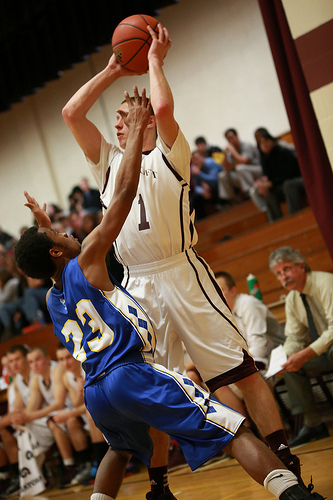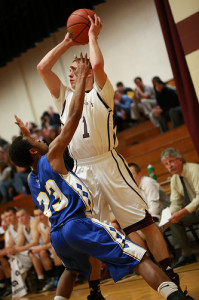How to Teach an Overhead Pass

An Overhead Pass is used in basketball to elevate the ball so the pass is often more easily seen by the receiver. The Overhead Pass provides a different angle for the ball to travel and so is ideal in situations like passing over defenders, skip passing, or passing into the post. The Overhead Pass must be practiced frequently in competitive situations as the finer points of performing this skill successfully can be challenging for players.
Problems with the Overhead Pass often start with players using the technique to lob the ball. This causes problems, as the lob pass while having a place within the normal play of basketball, is not overly appropriate for a range of situations. One of the Overhead Passes benefits however is putting the ball in the air while still having pace and speed involved in the technique of the pass.
Teaching points for the Overhead Pass are very different to the majority of other passes commonly employed in basketball. This levering action of the Overhead Pass is a challenge for players, especially in regards to accuracy, but with some practice can be utilised just as fast and precisely as other passing skills.

Start the Overhead Pass from a Triple Threat Stance; in all passing situations, and just in general, when practicing different techniques have players start in a Triple Threat Stance so they become familiar with the habit
Players should Step towards the Intend Target; to help start the powerful movement of an Overhead Pass players should utilise good footwork by stepping towards the intended target to help build momentum
During the Step the Ball should move from hip in Triple Threat Stance to Above Head; this will need to be a quick movement and happen succinctly as the player is stepping forward. Both hands remain on the ball at all times
Basketball should not move any further Backwards then in line with Head; players often try to tease out more power in their Overhead Pass by moving the ball in their backswing to behind the head. This will result in a loss of accuracy and places the basketball in a position where the passer cannot see and so is prone to stealing or defensive interference
Target area is between the Chest and Chin; because of the increased angle, the passing zone also increases. When passing into the post the target area of an Overhead Pass may increase further to the head. This may also be true when passing to cutters on the move so to help with improving vision of the flight of the ball
Follow through of the Pass should result in both Hands/fingers pointing at Target; the Overhead Pass uses both arms equally to help stabilise the ball and generate power when passing. If the technique is performed correctly, both hands should have an identical finishing position pointing at the target area
Head should remain up; one of the common problems seen in the Overhead Pass skill is players try to generate more power through their shoulders instead of coordinating all their body into the passing technique. This results in is over use the players back, shoulders and arms. Players should lean forward slightly during the pass but never to the point where the head dips or they end up looking towards the ground. Eyes must remain on the target at all times.
Many game like situations will not allow the passer to step when using the technique. Practicing the Overhead Pass without taking a step should also be undertaken during training sessions so payers can become comfortable with both options.
The Overhead Pass is a very useful skill, but is prone to players robbing the technique of power and speed. This raises commonly seen problems such as interceptions and deflections happening. Players should practice with the technique enough so they are able to be accurate without needing the slow down the speed at which the skill is performed.






Leave a Reply